INFRASTRUCTURE | DEVELOPMENT | HIMALAYAS | SUSTAINABILITY | NEPAL

The greater Himalayan region stands as one of the most crucial mountain systems globally, boasting the largest snow and ice cover after the polar regions and playing a pivotal role in stabilising the Earth’s climate.
Frequently hailed as the "water tower of Asia," the Himalayan glaciers serve as the source of some of the planet’s mightiest rivers, such as the Indus, Ganga, Brahmaputra, and Mekong. These perennial rivers sustain billions of lives in South Asia and Southeast Asia and the surrounding ecology.
But with the ongoing logistical revolution and rapid integration into regional and global economies, the region that features the world's highest mountains has become a new frontier for resource exploration driven not only by changing development models and economic needs but also by security concerns stemming from the region’s geopolitical dynamics.
All for the sake of development
It is natural for any population to desire infrastructural development and improvement in their lives and livelihood; however, there’s a concerning trend of misguided development across the entire Himalayan region in South Asia, often afflicted by the issue of gigantism.
The allure of extensive infrastructure projects such as large dams, tunnels, and highways, coupled with mass tourism, as a means to development and economic growth, has exerted considerable strain on the region’s carrying capacity and fragile ecology.
The Himalayas is one of the world's highest mountain ranges, characterised by rich biodiversity and breathtaking landscapes, but now faces a continuous infrastructure boom that started in the early post-colonial days. Consider, for example, dams. Himalayan rivers have been central to the region's history, with Himalayan waters nurturing civilizations in South Asia for millennia.
People in the Himalayan mountains have traditionally lived in harmony with nature, viewing rivers as sacred and maintaining their physical and ritual purity through the respectful use of river water for life and livelihood. However, the advent of industrialization and modernization marked a shift, as dams became symbols of modernity and progress in India, championed by leaders from Nehru to Modi.
This strain is further exacerbated by the aggressive forays for economic growth associated with the new neoliberal developmentalism. Across all Himalayan states in South Asia, there has been ruthless exploitation of forest and water resources through forest extraction programs and dam construction.
India, in particular, has been at the forefront of such exploitation, initially through the colonial mode of resource exploitation during the colonial era, followed by paternalistic post-colonial state practices pre-liberalization, and more recently through neoliberal modes of predatory resource extraction.
With a Neoliberal developmentalist state at the helm, states have adopted neoliberal means to achieve their developmental goals, including the unleashing of the private sector, the commodification of natural resources, and the relaxation of environmental standards.
Market liberalisation in India after the 1990s paved the way for private sector participation in hydropower generation. The government’s rush for renewable energy generation, and energy sufficiency coupled with goals of decarbonisation and global prestige associated with it has allowed private sectors to maximise profits and minimise risks often through the transfer of risks and negative externalities to the local population.
In addition, the government has socialised some of the economic, environmental, and social costs associated with the hydropower projects to reduce risks and increase profits for private investors (Growth of Hydropower in India: Role of the Private Sector (orfonline.org)). Similarly, the Indian government has exempted the highways in the high Himalayas from environmental assessments citing their strategic importance in the frontiers which has also become geopolitical flashpoints.
Nepali state following the trajectory of its Himalayan counterparts has been fervently pushing for resource extraction in new frontiers, supported by an infrastructure-building spree in the remote highlands, with private sector and foreign investments, aimed at rapid economic growth. Take sand and gravel mining, for example, apart from the large hydro projects planned in the Himalayan rivers.
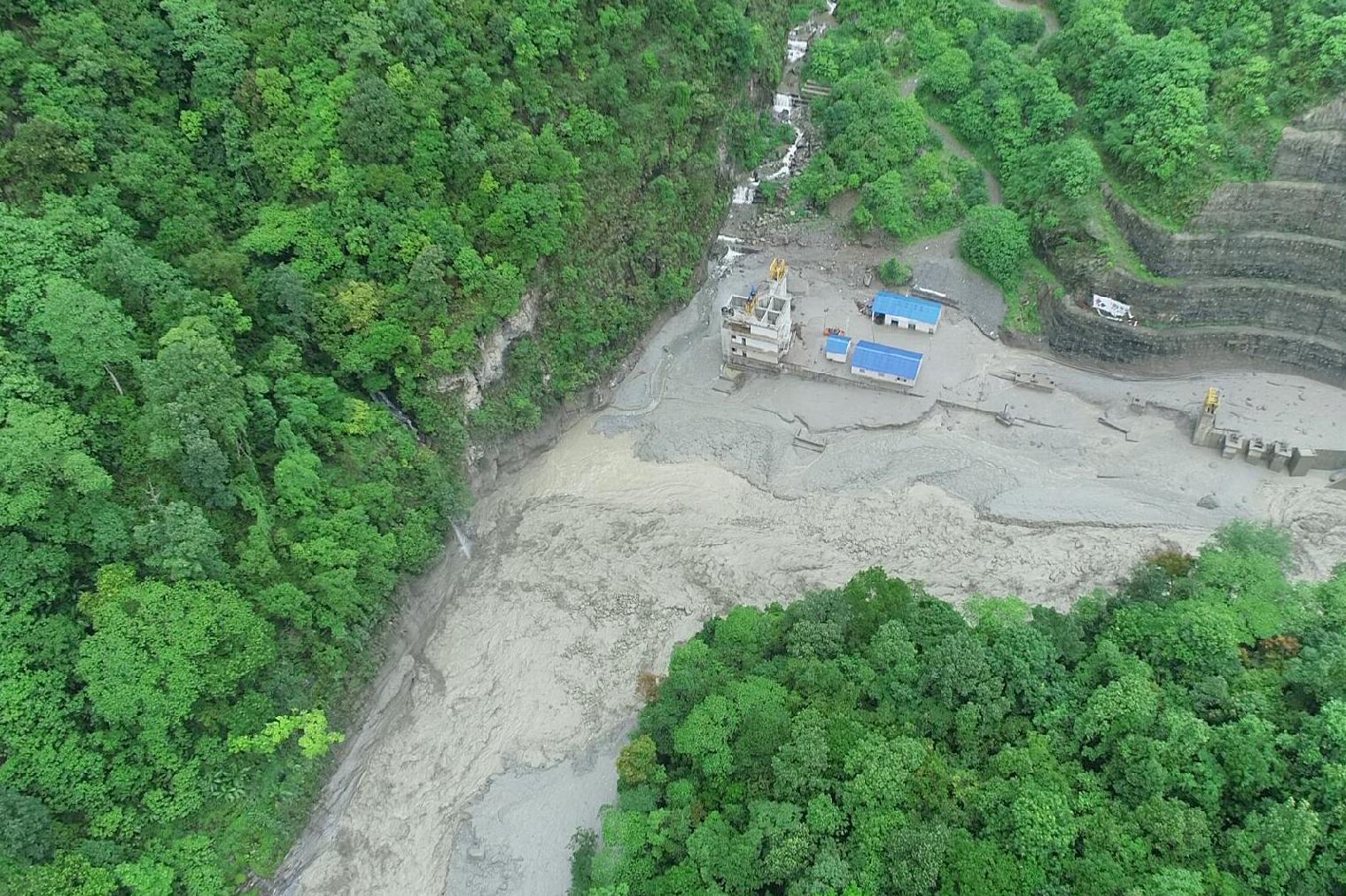
On the other hand, there is a conspicuous absence of political commitment to check the negative environmental impacts of developmental activities despite the existence of laws and regulatory frameworks to do so. There is a tendency among the political leaders and representatives to flout the EIA norms to facilitate infrastructure development and natural resource extraction while the quality and effectiveness of Environmental Impact Assessment (EIA) are often dubious.
While the hydroelectricity projects are touted to be a clean source of energy vital to the energy transition, these projects generate social and ecological adversities and also have dubious green credentials owing to methane produced in large reservoirs. Submergence generated by large dams not only displaces people, it also destroys the culture and way of life that had emerged in the landscape around the river.
Apart from the human costs of dams, they come with huge ecological impacts. Both submergence and change in the water flow are known to have deleterious impacts on the biodiversity of the Himalayas which is a threatened biodiversity hotspot.
Similarly, transmission lines and highways built in the Himalayas have tremendous ecological costs as they usually entail deforestation, affecting the migration pattern or route of wild animals.
While the slow violence of these large infrastructures may not be visible to our eyes and are often brushed off in the name of growth and development, their pernicious impact cannot be denied. Similarly, these large infrastructures tend to increase the incidents of accidents in the Himalayas [which will be elaborated upon in the following sections].
Geopolitics driving infrastructures
One can witness a spree of infrastructure development in the Himalayas, catalysed not only by economic imperatives but also by geopolitics. In the present time, the Himalayas have evolved into a geopolitical flashpoint between India and China, with both countries engaging in competitive infrastructure development driven by security imperatives.
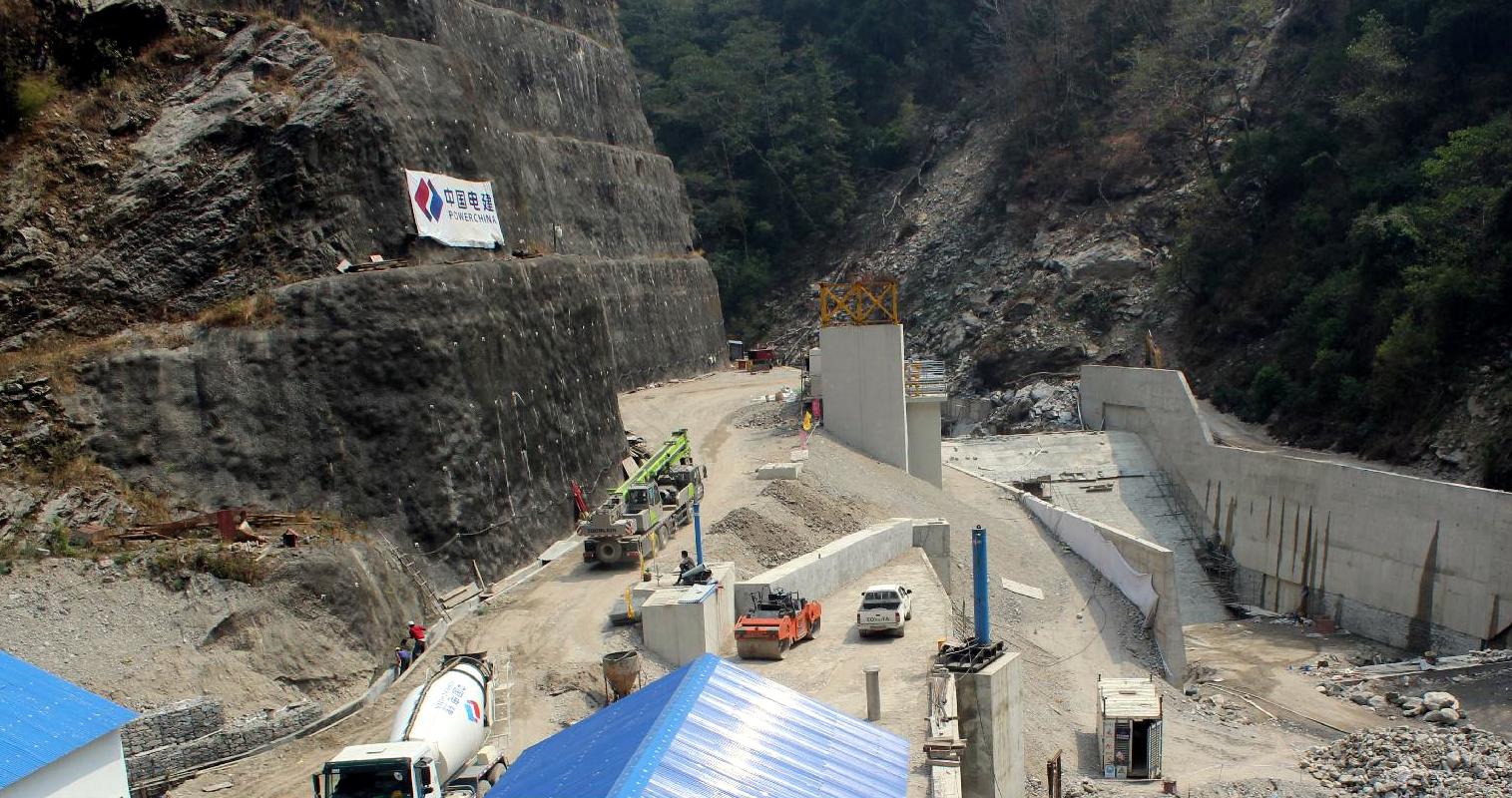
While earlier seen as a bulwark against the Chinese threat, the Chinese infrastructure drive in the region has generated anxiety among Indian leaders and pressure to match Chinese efforts. These roads are expected to not only address military logistics in case of conflict but also improve intra-regional connectivity.
It has also helped the Indian government to portray itself as pro-development, nationalist, and pro-Hindu by improving connectivity to the religious sites in the Himalayas which resonate with Indian voters. Moreover, projects like the Atal Tunnel in Himachal Pradesh, and the Z-Morh Tunnel in Jammu and Kashmir along with the Chardham highway are expected to boost both religious and other tourism in the region.
Indian construction of the road to Lipu Lekh which Nepal considers to be its territory generated a geopolitical fallout between Nepal and India was also ostensibly built to facilitate Indian pilgrims to Kailash Mansarovar. Religious messaging regarding Himalayan roads can belie its strategic significance.
Sadly, the militarization of the high Himalayas and its impact on the sparsely populated region's fragile ecology and geology raise significant concerns. For instance, the militarization of the Ladakh region, where India is in a standoff with Pakistan and China, has increased the pollution in the region which coupled with the effects of climate change and global warming has increased the rate of glacial retreat thus precipitating the water crisis for the millions of people in the region.
India and China have competing claims in the Himalayan watershed like that of the Brahmaputra basin. Infrastructure like dams and road building are how they assert their sovereignty in the region and enclose the natural resources for extraction, often eroding local sovereignty.
Today, the Indian Himalayas stand as one of the most densely dammed regions globally, fueled by a competitive dam rush, particularly in response to China's infrastructural developments in high altitudes. India's pursuit of clean energy, coupled with geopolitical tensions with China, has led to the creation of larger infrastructures such as dams and roads at higher altitudes for strategic purposes. Despite their prevalence, dam safety in the region has come under scrutiny, exemplified by incidents like the breach of the Chungthang dam.
Dams have also climbed high into the Nepali Himalayas and Indian investments in such projects as Arun III near the Sino-Nepal border speaks of the strategic significance of such projects with Indian assistance apart from developmental ones. In this context, there seems to be a failure on the part of these countries to learn from each other’s experiences and developmental practices.
This essay examines several accidents caused by the state's planning failures and flawed developmental practices at different sites in the Indian Himalayas and instances from Nepal too. Some incidents made headlines in recent years, some occurred decades ago.
Chungthang dam breach
On 4th October 2023, the 60-metre tall Chungthang dam in the Indian state of Sikkim, producing 1,200 MW of electricity, experienced a breach that not only posed a threat to downstream areas but also raised concerns about dam safety throughout the country.
The breach, triggered by a heavy cloud burst in the Kanchenjunga region and a subsequent glacial lake outburst highlighted the vulnerability of large dams in the face of natural disasters. Over 92 people were killed.
Even experts who defend large hydroelectric dams in the Himalayas in general and refuse to see the Chungthang dam as a culprit have raised questions regarding its dam break model study, standard operating procedure, and whether sufficient safeguards against seepage were in place. They have pointed out the need to keep the glacial lakes at the catchment area of the dam under constant observation along with the need for information sharing between dams in the region which are owned by different entities.
Also, read here: “The Sikkim floods – In defence of the Chungthang Dam project”.
The 1993 Cloudburst and Impact on the Kulekhani Reservoir
Nepal, sharing geological traits with the Indian Himalayas, faces similar seismic hazards and uncertainties associated with large dam structures.
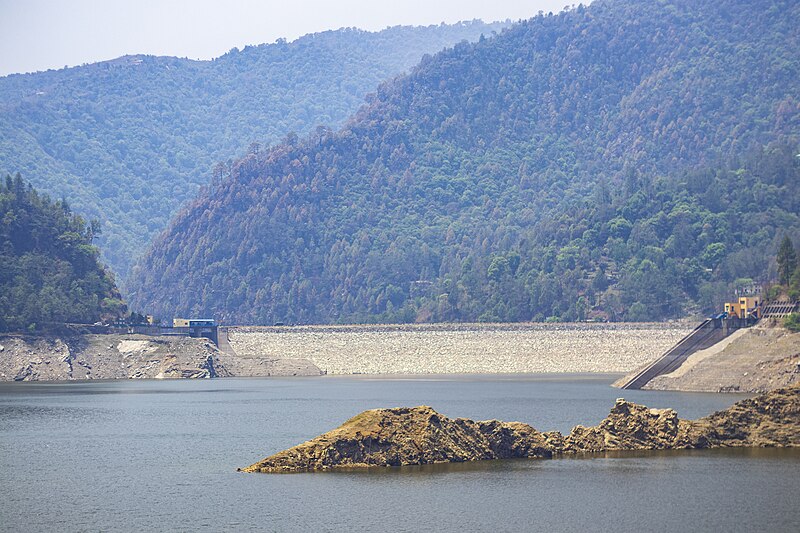
In 1993, the Kulekhani Reservoir hydroelectric project suffered severe damage when an unprecedented cloudburst (540 mm in 24 hours) hit the Kulekhani watershed. This triggered many debris flows and landslides. 300 landslides of various sizes were observed in the watershed while the debris flow brought in a sediment volume of 5.1 million m3 in the reservoir.
The disaster destroyed 52 houses and killed 62 persons in Phedigaun village and seriously affected two stations and the reservoir. Though the cloudburst triggered the disaster, the geology, geomorphology, soils, and slopes also played a vital role.
The recent flood-induced destruction of the headworks of the Melamchi water supply project can also serve as a reminder, underscoring the economic, ecological, and social costs associated with large dams and their follies.
As both India and Nepal grapple with the consequences of large dam projects, there is a pressing need to reassess the development paradigm that relies heavily on these structures.
Lessons from incidents like the Chungthang dam breach emphasise the importance of considering seismic risks, safety standards, and environmental impacts in the pursuit of sustainable energy solutions.
The potential repercussions of poorly executed large dams on the economies of smaller nations like Nepal necessitate a thoughtful and cautious approach to hydroelectric development in the fragile Himalayan region. While India has sought to monopolise dam building in Nepal, the recent dam collapse in India raises questions about the safety of dams constructed or being constructed by India here.
Tunnel Disaster in Uttarakhand
The recent tunnel disaster in Uttarakhand captured global attention after dozens of trapped workers were successfully rescued following a prolonged and challenging effort. While the courage of the rescuers and the frantic attempts by the government and companies to manage the crisis made headlines, the incident did not prompt the necessary level of public debate around disaster risks.
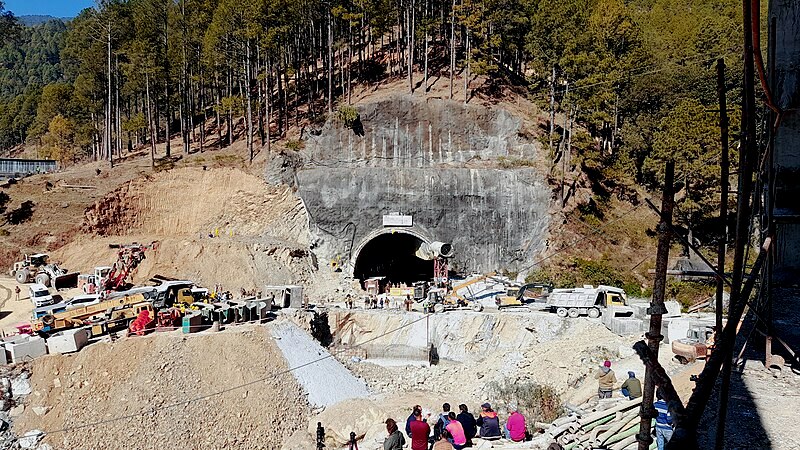
The tunnel was a vital component of a highway project aimed at enhancing connectivity to Yamunotri, a significant pilgrimage site in the Chardham Yatra, and intended to boost trade, tourism, and overall socioeconomic development in the region.
The unfortunate event has raised critical questions about the adequacy of risk assessments, geological mapping, and geotechnical evaluations regarding rock stability and seismic activity.
Termed 'geological surprises,' these accidents often result from inadequate analysis of the geography and geology. The project faced controversy from its inception, with environmentalists expressing concerns about the extensive drilling and construction activities in this Himalayan region.
While tunnel construction can offer environmental benefits compared to other alternatives, Nepal's foray into tunnel projects for highways necessitates a careful consideration of all associated uncertainties. Similarly, Nepali policymakers must be cautious about embarking on large projects like the trans-Himalayan railway connecting Nepal to China which demands extensive tunnel construction.
Lessons from Joshimath
Joshimath, a picturesque town in Uttarakhand along the route to Badrinath, has been in the spotlight due to the tragic challenges it faces. The phenomenon of land subsidence, impacting the town's population of less than 20,000, emerged during the construction of the massive 520 MW hydroelectric dam, Tapovan Vishnugad Dam, by NTPC, India’s largest integrated power company, a decade ago.
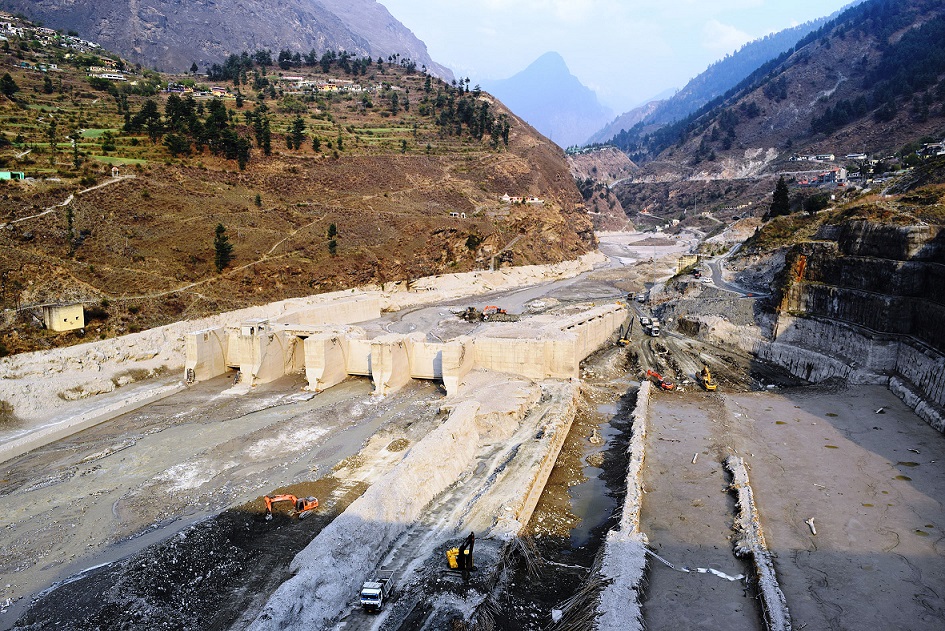
The dam's construction had a lasting impact on the fragile geology of the region, further exacerbated by the glacier lake outburst flood in 2021. As the floodwaters receded, visible cracks and subsidence began to afflict the town.
Similarly, the increasing influx of tourists has led to unplanned infrastructure development in Joshimath. Expansion of roads, hotels, and restaurants has intensified the strain on the town's delicate geology and geography.
Despite recommendations from the Mishra Commission, a commission formed in 1976 by the then Uttar Pradesh government headed by Garhwal Commissioner Mahesh Chandra Mishra which had warned of landslides and localised subsidence of Joshimath and recommended restricted development activities in the region, these advisories were largely ignored.
This pattern of development, disregarding the carrying capacity of the city, mirrors a broader issue prevalent across the Himalayas. The burgeoning middle class's exploration of once remote and pristine Himalayan locations exerts substantial pressure on these landscapes.
While Joshimath is the first town to experience such a tragedy, several other cities and tourist destinations in the Indian Himalayas also face a rising disaster risk due to aggressive and unplanned development. Population pressure, unchecked development, tourism, and heavy rainfall exacerbate this problem.
In cities like Kathmandu, economic and developmental demand leads to excessive groundwater extraction, posing a risk of land subsidence. Pokhara owing to its geophysical characteristics is vulnerable to land subsidence and has witnessed various such incidents in recent years. The challenges posed by the Himalayan geography and geology are compounded by climate change, necessitating careful consideration in constructing sustainable and nature-friendly projects.
While mandatory environmental impact assessments for large infrastructure projects remain in place, concerns persist regarding their quality and validity. There is a tendency to view these assessments as impediments to development, but they serve as necessary safeguards against extractive practices associated with 'development.' This trajectory not only harms the environment, ecology, and the general population but also threatens long-term economic growth.
Nepal's eagerness and pursuit of large-scale projects suggest a disregard for the lessons gleaned from mishaps in the Himalayas of its territory and its neighbour India, where the Indian Himalayas have been the cradle of some of the most iconic and legendary environmental movements, such as the Chipko movement against timber logging in the Uttarakhand Himalayas. There is much to be learned from the experiences of other countries in the Hindu Kush Himalayas regarding the governance and development in the Himalayas.
While the International Center for Integrated Mountain Development (ICIMOD) has played a commendable role in the production and sharing of knowledge regarding the Himalayan environment and society, structures, and mechanisms that facilitate greater cooperation must be envisioned and developed amid the challenges posed by global warming, climate change and pressures of development in this geoecological region.
While Nepal requires development, the country's chosen developmental model must be both ecologically and economically viable. Similarly, small community-based micro-hydropower projects in Nepal provide off-grid electricity access to a significant Nepali rural population and have emerged as a successful model for replication.
Nepal’s community forestry also serves as an example for others to emulate. These movements embody a resistance against both state intervention and capitalist interests, striving to chart extractive paths in the name of development.
The most sustainable approach for Nepal's economic challenges lies not in grandiose projects but in smaller, community-based solutions. Embracing the concept that "small is beautiful" for a country like Nepal, such localised projects minimise risks associated with Himalayan geography, geology, and climate while empowering local communities to operate and manage these initiatives.
Nepal must uplift itself from poverty and maldevelopment through sustainable, locally driven solutions, recognizing that large capital-intensive ecological imprudence, sans rigorous environmental and financial assessments, is not the answer to its challenges.
Read More Stories
Kathmandu’s decay: From glorious past to ominous future
Kathmandu: The legend and the legacy Legend about Kathmandus evolution holds that the...
Kathmandu - A crumbling valley!
Valleys and cities should be young, vibrant, inspiring and full of hopes with...
Today’s weather: Monsoon deepens across Nepal, bringing rain, risk, and rising rivers
Monsoon winds have taken hold across Nepal, with cloudy skies and bouts of...